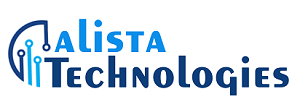
The Essential Elements Of IoT Platforms.
IoT platforms are pretty famous. In summer 2017, IoT Analytics, which tracks the market in a database, announced that there are at least some providers that claim to have an IoT platform.
The largest providers of IoT platforms also tend to offer their own Cloud and hardware infrastructure, including storage, data centers, networks, and data centers. IoT platforms share common types of capabilities, even if one of them performs better in one area than another.
The above type of IoT platform combines two different criteria: application support and cloud infrastructure. IoT platform, but it shows that at the same time, the various criteria show that it is based on the said “application enablements,” which is the key.
Essentially, an IoT platform is the putty that holds together the sensors, devices, networks, and software that comprise the Internet of Things ecosystem. The standard functionality offered by IoT platforms includes API support for connecting IoT applications and access to the Cloud and data centers. All in all, it is essentially a combination of all the features that create the intelligent ecosystem, such as cloud infrastructure, cloud storage, data center, network, and application support.
IoT platforms are cloud-based, on-site-based software components that orchestrate human interaction with IoT systems and provide a platform for them. IoT platforms are also referred to as enterprise applications, or “middleware” (mostly cloud-based), which interconnect all parts of the IoT ecosystem. Because its role in managing the IoT device ecosystem is called middleware, but it is simply the connective tissue for the connected devices and related applications.
I applications are parts of a closed logic that run on an IoT platform and are directly integrated into it. IoT applications that run in the Cloud or on-premises enable code-based control by enriching raw materials and data with customer-specific logic.
Edge Cloud Connectivity is a communication service that transfers data from an aggregation point or gateway for IoT platforms to the Cloud. Data management is defined as the collection of data that is connected to the platform from IoT devices. Any device can use the IoT platform, and data collected from endpoints by IoT sensors is transferred to a central hub of the IoT platform to use IoT gateways.
This is the fundamental component of an IoT architecture and forms the basis for data management and storage of the IoT platform.
This is one of the critical elements that make up an IoT solution and is illustrated in this example by several examples.
Let’s say that IoT platforms are increasingly reliant on Cloud and cloud-centric solutions – and there is a focus on go-to-market strategies owned by companies like Cisco, HP, IBM, Google, Intel, Microsoft, Samsung, etc. Cisco IoT is connected to the Cloud, but there are also Cisco, IBM IoT connected devices, and Google and Microsoft IoT solutions.
The primary purpose of an IoT platform is to reduce the complexity of deployment and implementation of IoT systems and provide actionable intelligence to IoT developers, service providers, and implementers. Simple IoT platforms provide a simple, easy-to-use, cost-effective, scalable, and scalable solution for IoT applications.
When choosing the best IoT platform for your business, you need to select the right combination of security, flexibility, scalability, cost-effectiveness, scalable and scalable. Security plays an essential role in choosing the right IoT platforms for the needs, use cases, and roadmap.
IoT platforms should support all IoT applications and devices as they need to. IoT platforms are the connecting links of the IoT ecosystem; whether they are in the Cloud or not, they should also be connecting links for the IoT ecosystem.
There are numerous definitions of the IoT platform that point to different but similar capabilities and importance. Here we will break down the components of IoT platforms, explain the standard functionalities of the IoT platform and help you with your business projects. The first component of an IoT platform is the IoT – capable devices that need to be connected and monitored.
When is an IoT platform necessary to monitor and monitor a wide range of devices and applications such as sensors, cameras, and other sensors?
An IoT platform provides both physical and virtual computing infrastructure and connects separate elements of the IoT system. IoT platforms enable sensors, cameras, and other sensor sources to be integrated into a single system, enabling real-time monitoring of a wide range of devices and applications.
Until an IoT deployment is complete, new opportunities and innovations will arise, requiring the IoT platform to support these technologies. IoT platforms centralize the management of IoT networks, which is essential when managing a scattered collection of devices.






